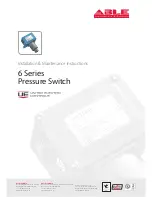
If the device cannot read the network-confg, cisconet.cfg, or the hostname file, it reads the router-confg
file. If the device cannot read the router-confg file, it reads the ciscortr.cfg file.
The device broadcasts TFTP server requests if the TFTP server is not obtained from the DHCP replies, if all
attempts to read the configuration file through unicast transmissions fail, or if the TFTP server name cannot
be resolved to an IP address.
Note
How to Control Environment Variables
With a normally operating device, you enter the boot loader mode only through the console connection
configured for 9600 bps. Unplug the device power cord, and press the
Mode
button while reconnecting the
power cord. The boot loader device prompt then appears.
The device boot loader software provides support for nonvolatile environment variables, which can be used
to control how the boot loader, or any other software running on the system, operates. Boot loader environment
variables are similar to environment variables that can be set on UNIX or DOS systems.
Environment variables that have values are stored in flash memory outside of the flash file system.
Each line in these files contains an environment variable name and an equal sign followed by the value of the
variable. A variable has no value if it is not present; it has a value if it is listed even if the value is a null string.
A variable that is set to a null string (for example, “ ”) is a variable with a value. Many environment variables
are predefined and have default values.
You can change the settings of the environment variables by accessing the boot loader or by using Cisco IOS
commands. Under normal circumstances, it is not necessary to alter the setting of the environment variables.
System Management Configuration Guide, Cisco IOS XE Gibraltar 16.10.x (Catalyst 9200 Switches)
59
Performing Device Setup Configuration
How to Control Environment Variables
















































